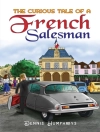‘The Tarzan Collection – Volume III’ collects the seventh, eighth and ninth novels from the enormously popular twenty-four volume Tarzan series of novels by adventure fiction writer Edgar Rice Burroughs into one volume. This collection contains ‘Tarzan the Untamed, ‘ ‘Tarzan the Terrible’ and ‘Tarzan and the Golden Lion.’
In the first of these tales, we find that Tarzan has suffered a great loss: Tarzan’s jungle plantation – attacked by German troops while he wa...
‘The Tarzan Collection – Volume III’ collects the seventh, eighth and ninth novels from the enormously popular twenty-four volume Tarzan series of novels by adventure fiction writer Edgar Rice Burroughs into one volume. This collection contains ‘Tarzan the Untamed, ‘ ‘Tarzan the Terrible’ and ‘Tarzan and the Golden Lion.’
In the first of these tales, we find that Tarzan has suffered a great loss: Tarzan’s jungle plantation – attacked by German troops while he was away- has been destroyed and everyone on the property killed and burned…including, it appears, his beloved wife Jane. Driven mad with the thirst for revenge, Tarzan vows to wipe out as man Germans as possible and sets out on a dangerous and murderous quest.
In book eight, ‘Tarzan the Terrible, ‘ Tarzan is shocked to learn that Jane may indeed be alive and pursues her purported captors deep into the jungle. There he discovers a hidden valley kingdom called Pal-ul-don, which not only contains two, fiercely warring tribes but also huge, carnivorous Triceratops-like creatures called ‘Gryfs’ roaming the countryside. Can Tarzan avoid these man-eating monsters? Can one of these tribes be holding his beloved Jane captive? And who is this strange young man called ‘Korak’ who appears to be hunting Tarzan through the jungle?
Finally, we have ‘Tarzan and the Golden Lion, ‘ wherein Tarzan, having befriended a lion cub and raised him as his own, is forced to return to Opar – the lost kingdom replete with gold and jewels – to help himself to more treasure to help shore up his estate’s finances. But when he arrives in Opar, he discovers that an old housemaid of his has copied Tarzan’s map to Opar and has also gone to the lost kingdom with a party of treasure-hunters to help themselves to the Oparian fortune.
Tarzan is among the most popular fictional characters in all of literature and his tales have been adapted into dozens of animated and live-action films as well as television and radio series and comic books.
The books contained in ‘The Tarzan Collection – Volume III’ are presented in their original and unabridged format.












